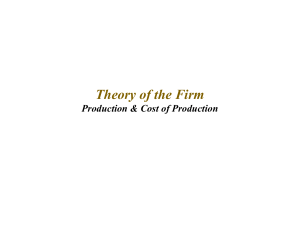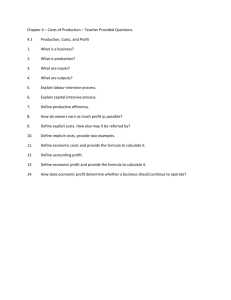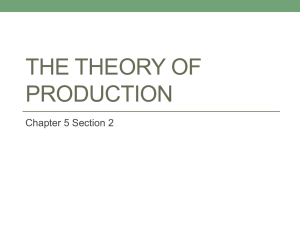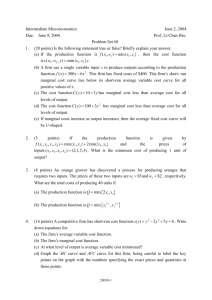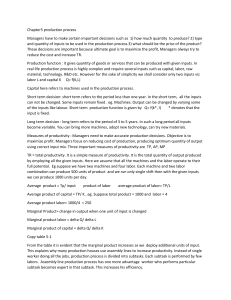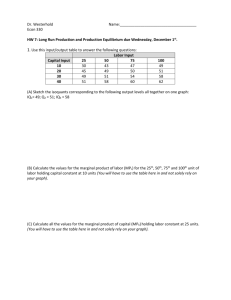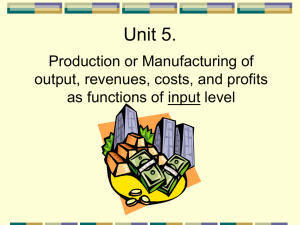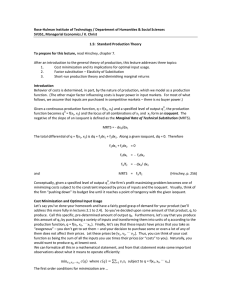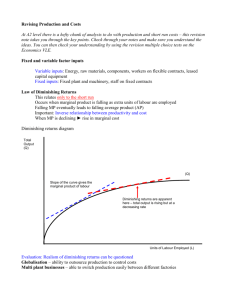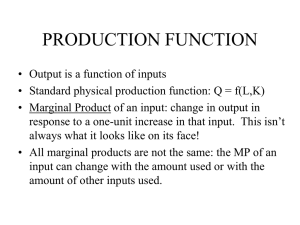Economics Problem Set: Microeconomics Questions
advertisement
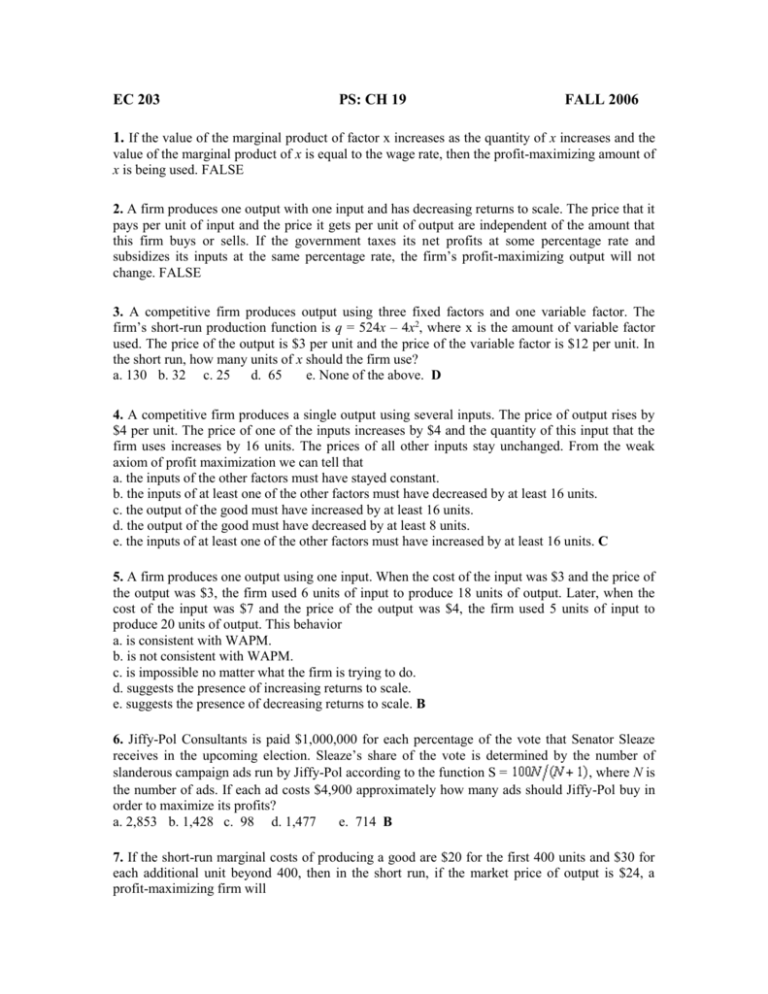
EC 203 PS: CH 19 FALL 2006 1. If the value of the marginal product of factor x increases as the quantity of x increases and the value of the marginal product of x is equal to the wage rate, then the profit-maximizing amount of x is being used. FALSE 2. A firm produces one output with one input and has decreasing returns to scale. The price that it pays per unit of input and the price it gets per unit of output are independent of the amount that this firm buys or sells. If the government taxes its net profits at some percentage rate and subsidizes its inputs at the same percentage rate, the firm’s profit-maximizing output will not change. FALSE 3. A competitive firm produces output using three fixed factors and one variable factor. The firm’s short-run production function is q = 524x – 4x2, where x is the amount of variable factor used. The price of the output is $3 per unit and the price of the variable factor is $12 per unit. In the short run, how many units of x should the firm use? a. 130 b. 32 c. 25 d. 65 e. None of the above. D 4. A competitive firm produces a single output using several inputs. The price of output rises by $4 per unit. The price of one of the inputs increases by $4 and the quantity of this input that the firm uses increases by 16 units. The prices of all other inputs stay unchanged. From the weak axiom of profit maximization we can tell that a. the inputs of the other factors must have stayed constant. b. the inputs of at least one of the other factors must have decreased by at least 16 units. c. the output of the good must have increased by at least 16 units. d. the output of the good must have decreased by at least 8 units. e. the inputs of at least one of the other factors must have increased by at least 16 units. C 5. A firm produces one output using one input. When the cost of the input was $3 and the price of the output was $3, the firm used 6 units of input to produce 18 units of output. Later, when the cost of the input was $7 and the price of the output was $4, the firm used 5 units of input to produce 20 units of output. This behavior a. is consistent with WAPM. b. is not consistent with WAPM. c. is impossible no matter what the firm is trying to do. d. suggests the presence of increasing returns to scale. e. suggests the presence of decreasing returns to scale. B 6. Jiffy-Pol Consultants is paid $1,000,000 for each percentage of the vote that Senator Sleaze receives in the upcoming election. Sleaze’s share of the vote is determined by the number of slanderous campaign ads run by Jiffy-Pol according to the function S = , where N is the number of ads. If each ad costs $4,900 approximately how many ads should Jiffy-Pol buy in order to maximize its profits? a. 2,853 b. 1,428 c. 98 d. 1,477 e. 714 B 7. If the short-run marginal costs of producing a good are $20 for the first 400 units and $30 for each additional unit beyond 400, then in the short run, if the market price of output is $24, a profit-maximizing firm will a. b. c. d. e. not produce at all, since marginal costs are increasing. produce as much output as possible since there are constant returns to scale. produce up to the point where average costs equal $24. produce a level of output where marginal revenue equals marginal costs. produce exactly 400 units. E 8. A competitive firm has a production function described as follows. “Weekly output is the square root of the minimum of the number of units of capital and the number of units of labor employed per week.” Suppose that in the short run this firm must use 16 units of capital but can vary its amount of labor freely. a. Write down a formula that describes the marginal product of labor in the short run as a function of the amount of labor used. (Be careful at the boundaries.) b. If the wage is w = $1 and the price of output is p = $4, how much labor will the firm demand in the short run? c. What if w = $1 and p = $10? d. Write down an equation for the firm’s short-run demand for labor as a function of w and p. a. MP = if L < 16, MP = 0 if L > 16. b. 4. c. 16. d. L = ( )2.
